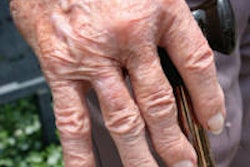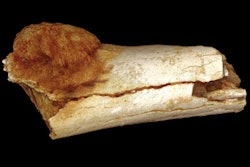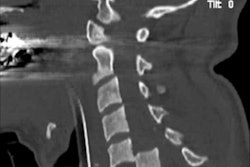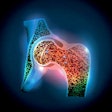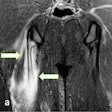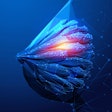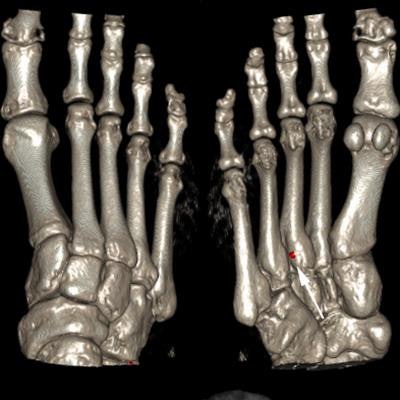
Good news: In patients with gouty arthritis, single-source dual-energy CT has good sensitivity and high specificity to detect uric acid depositions, obviating the need for digital radiography (DR) or conventional CT, German researchers have found.
The research team, led by Dr. Kay-Geert Hermann, PhD, from the radiology department at Charité -- Universitätsmedizin Berlin, compared single-source dual-energy CT with DR and conventional CT in patients with suspected gouty arthritis and found single-source dual-energy CT came out on top (European Journal of Radiology [EJR], 8 August 2016).
Single-source dual-energy CT is "capable to detect uric acid depositions with good sensitivity and high specificity in feet, therefore diagnostic confidence is improved," they wrote.
The comparisons
Past research has shown dual-energy CT is useful and reliable for diagnosing chronic tophaceous gout. However, in most of the studies, patients were imaged in the dual-source mode on CT scanners with two x-ray tubes, the EJR study authors wrote. Different techniques have been developed to perform dual-energy imaging on single-source dual-energy CT systems, but how do they compare with conventional CT or even with DR? That's precisely what the researchers set to find out.
For their retrospective study, they included 44 patients who underwent single-source dual-energy CT scans on a 320-detector-row CT scanner (Aquilion One, Toshiba Medical Systems) on one or both feet for suspected gouty arthritis.
Single-source dual-energy CT and conventional CT scans (both n = 44), as well as DR images (n = 36), were scored for presence of osteoarthritis, erosions, and tophi by three readers who were blinded to clinical details, diagnosis, other imaging modalities, and the other reader's scoring results. A diagnosis was made for each imaging modality, and the results were compared with the clinical diagnosis.
 A 37-year-old patient presenting to the hospital with acute monoarthritis of the first metatarsophalangeal joint. Uric acid levels were elevated. The radiograph showed no changes, especially no erosions or gouty tophi. Doubt about the diagnosis of gout arose due to the young age of the patient. Dual-energy CT, however, depicted a small tophus at the third tarsometatarsal joint, which can easily be missed on conventional CT (arrows), confirming the diagnosis of tophaceous gout. Image courtesy of Dr. Torsten Diekhoff.
A 37-year-old patient presenting to the hospital with acute monoarthritis of the first metatarsophalangeal joint. Uric acid levels were elevated. The radiograph showed no changes, especially no erosions or gouty tophi. Doubt about the diagnosis of gout arose due to the young age of the patient. Dual-energy CT, however, depicted a small tophus at the third tarsometatarsal joint, which can easily be missed on conventional CT (arrows), confirming the diagnosis of tophaceous gout. Image courtesy of Dr. Torsten Diekhoff.To compare the imaging findings with the clinical presentation, the researchers retrospectively measured levels for serum uric acid, leucocytes, erythrocyte sedimentation rate, C-reactive protein (CRP), creatinine; a final diagnosis was made by referring rheumatologists. Based on the rheumatologist's final diagnosis, the patients were divided into a gout group and a control or "other diseases" group.
The researchers found 21 cases of gout. Osteoarthritis was evident in 15 joints using CT and 30 joints using DR. There were 134 erosions detected by CT compared with 38 erosions detected by DR. In total, 119 tophi were detected by single-source dual-energy CT compared with 85 tophi by CT and 25 tophi by DR. Single-source dual-energy CT had the best diagnostic value for diagnosis of gout compared with DR and conventional CT.
| Comparison of all 3 modalities | |||
| DR | CT | Single-source dual-energy CT |
|
| Sensitivity | 44.4% | 71.4% | 71.4% |
| Specificity | 83.3% | 91.3% | 95.7% |
| Positive predictive value | 72.7% | 88.2% | 93.8% |
| Negative predictive value | 60% | 77.8% | 78.6% |
"Our results suggest that single-source dual-energy CT is able to detect uric acid depositions with good sensitivity and high specificity, including very small lesions (< 1-mm diameters), providing additional diagnostic information compared with DR and conventional CT," the study auhors wrote. "Given the specificity and sensitivity demonstrated here, we suggest single-source dual-energy CT as a problem-solving diagnostic tool in difficult cases with suspected gout, particularly when no joint aspiration can be performed."
Surprises
In an email to AuntMinnieEurope.com, co-author Dr. Torsten Diekhoff, also from Charité, discussed the group's dual-energy protocol, which delivered an estimated radiation exposure of 0.02 mSv, comparable to a conventional CT scan.
"We were surprised to see that dual-energy imaging with such low exposure provides reliable results and similar diagnostic accuracy as reported for conventional dual-energy protocols in the literature," Diekhoff wrote.
The researchers were also surprised to find that DR performed so poorly.
"We used to rely on radiographs to obtain hints on the presence of gout in challenging cases," Diekhoff stated. "And now our study teaches us that radiography appears to have lower sensitivity and also inferior specificity compared with conventional CT and dual-energy CT."
In terms of future research, the team is focusing on dose reduction for dual-energy CT and the influence of different reconstruction modes on image quality and tophus detection. They are also interested in virtual bone marrow imaging using the dual-energy technique to search for osteitis and bone marrow edema.
"Dual-energy CT is an emerging imaging technique we will use more often in the future," Diekhoff noted. "Upcoming research should focus on which patients might benefit from fast and early dual-energy imaging. This is important for gout detection and treatment monitoring, but also for emergency imaging."




